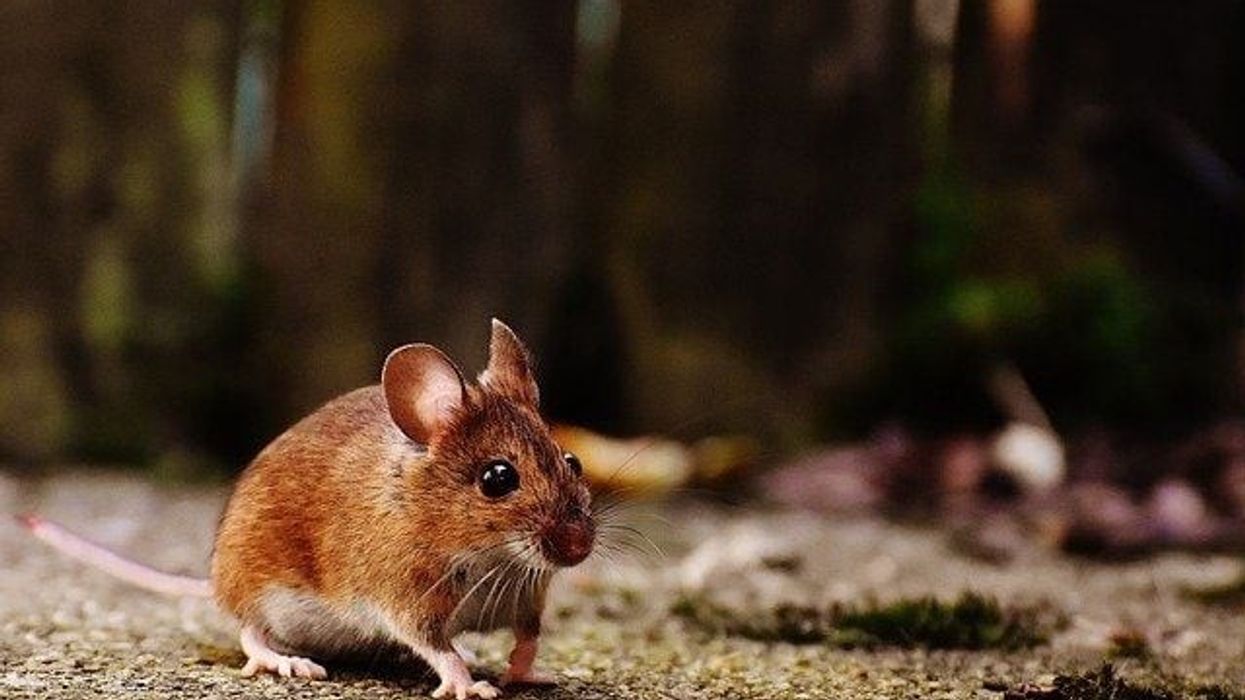The banded palm civet is a rare civet species from the Viverridae family and Hemigalus genus. The scientific name for the banded palm civet is Hemigalus derbyanus.
The Hemigalus genus was first described and named in 1837 by Claude Jourdan, with the banded palm civet being discovered by John Edward Gray. The banded palm civet, Hemigalus derbyanus, is found in the tropical forest and jungles in Southeast Asia.
These small animals are native to Myanmar, Peninsular Malaysia, and Thailand, as well as the Sunda Islands of Sumatra, Sipura, and Borneo. The nocturnal species usually reside in dark places and holes of trees during the day while coming out in search of food at night.
The banded palm civet, Hemigalus derbyanus, has an elongated body and a mouth with sharp teeth that helps it consume its food. Their partially retractable claws also make climbing easy. The body of the banded palm civet comes in a range of colors like tan, black, white, brown, yellow, and gray.
These animals are listed as a Near Threatened species by the International Union for Conservation of Nature Red List of Threatened Species. Read on to know more information about banded palm civets. For more interesting facts and information about animals, check out our articles on the red kangaroo and the black-footed ferret.
Banded Palm Civet Interesting Facts
What type of animal is a banded palm civet?
The banded palm civet is a rare civet species from the Viverridae family and Hemigalus genus. The Viverridae family also includes other civet species.
The scientific name for the banded palm civet is Hemigalus derbyanus. The word 'hemi' means 'half' and 'galus' means 'weasel', derived from the Greek word galē. Banded palm civets are closely related to weasels, binturongs, and mongooses.
What class of animal does a banded palm civet belong to?
Banded palm civets belong to the class of mammals in the animal kingdom.
How many banded palm civets are there in the world?
While there is no accurate estimate of the population of banded palm civets in the world, their numbers are declining. Over the past 15 years, the population of banded palm civets has reduced by more than 30%. They are, however, protected in their native forest habitat in regions like Malaysia, Myanmar, Thailand, Indonesia, and Brunei.
These animals are protected in Temengor Forest Reserve and Mount Kinabalu National Park. The species is listed as Near Threatened by the IUCN Red List. Deforestation and hunting are responsible for this.
Where does a banded palm civet live?
These animals are native to Myanmar, Peninsular Malaysia, and Thailand, as well as the Sunda Islands of Sumatra, Sipura, and Borneo. They are also found in captivity in protected areas like national parks, including the Similajau National Park, Temengor Forest Reserve, and Mount Kinabalu National Park as their population is vulnerable.
What is a banded palm civet's habitat?
Banded palm civets can be found in the tropical forest and jungles in Southeast Asia. The nocturnal species reside in dark places and holes of trees during the day while coming out in search of food at night. They are also found in captivity in protected areas.
Who do banded palm civets live with?
Banded palm civets are solitary animals. The males and females of this species only come together to mate.
How long does a banded palm civet live?
The average lifespan of a banded civet is 15-20 years in the wild. Their lifespan can increase up to 25 years when they are raised in captivity. The Nashville Zoo is one such AZA accredited facility that is responsible for breeding and raising this species in captivity.
How do they reproduce?
Not a lot is known about their reproductive behavior due to their reclusive nature and unsuccessful attempts at giving birth when raised in captivity. The information available is based on the sample studied, but this isn't large enough to make generalizations.
Banded civets reach sexual maturity by around two years of age. These animals may be seasonally or generally polyestrus with a cycle of four to seven days.
The gestation period of these animals is between 32-64 days, after which, they give birth to one or two offspring weighing around 125 g at birth. They are deaf and blind at birth but open their eyes after eight to 12 days.
They learn to walk by about 18 days following birth and can climb trees by the time they are four weeks old. Babies can be weaned off mother's milk after about 70 days.
What is their conservation status?
These animals are listed as a Near Threatened species by the International Union for Conservation of Nature Red List of Threatened Species. Deforestation is a major reason why this species is Near Threatened.
Deforestation results in habitat loss which affects the areas where these animals usually sleep and impacts their foraging activities. It also prevents them from running up trees to avoid predators. Because this natural protection behavior is no longer possible, they are more likely to end up being prey for large animals.
Apart from deforestation, these banded civets are also hunted by capturing them in snares and traps. Banded palm civets secrete a smelly, oily substance to mark their territories which was used in perfumes and to treat excess sweating and skin disorders.
They are also taken to coffee plantations where their droppings are used to grow coffee. Why? Their digested juices have the capacity to change the chemical balance of coffee beans so it has a softer flavor instead of a bitter flavor.
Banded Palm Civet Fun Facts
What do banded palm civets look like?
These animals look like small, domestic cats that have long, slender bodies. They usually measures 17-28 in (4-71 cm) in length and can weigh between 3-10 lb (1.4-4.5 kg).
They come in a variety of colors like black, yellow, brown, tan, gray, and white. They have short, dense fur with four to five dark bands on the back and two dark bands on the tail, while the tail end is dark brown to black in color.
They have tapered snouts that help them feed and retractable claws that make it easy for them to climb. They have 40 sharp teeth that help them catch and consume prey.
How cute are they?
Banded palm civets are pretty cute, especially when they are babies. Being the size of a domestic cat and related to animals like weasels, binturongs, and mongooses, these small creatures definitely score some cute points.
How do they communicate?
Banded palm civet facts drawing from observations of those raised in captivity show that vocalizations, scent-marking, and physical interaction are their methods of communication. They engage in territorial and defensive scent marking, with their social behavior including pacing, grooming, and a keen sense of smell. Vocalizations include hissing, growling, spitting, whining, and cooing.
How big is a banded palm civet?
A banded palm civet measures 17-28 in (4-71 cm) in length and is roughly the size of a domestic cat. While they are sometimes called civet cats, they do not actually belong to the feline family.
How fast can a banded palm civet run?
Information on this is not available.
How much does a banded palm civet weigh?
Banded palm civets can weigh in the range of 3-10 lb (1.4-4.5 kg).
What are their male and female names of the species?
Males and females of this family do not have separate names. They are just referred to by the name banded palm civet or civet cat.
What would you call a baby banded palm civet?
Baby banded palm civets are called kittens although they do not belong to the feline family.
What do they eat?
Banded palm civets primarily eat earthworms, small snakes, frogs, rodents, insects, and lizards. They also sometimes eat snails, ants, locusts, spiders, and crustaceans.
When they catch prey, they usually bite the back of the neck and shake violently to break the neck. They swallow with their heads tilted upwards. In captivity, they have been found to eat fruits as well, but this doesn't happen in the wild.
Are they aggressive?
Banded palm civets are not aggressive or dangerous animals. They don't usually attack humans unless they are provoked or cornered.
If they do exhibit such behaviors, it is likely just an attempt to protect themselves from some provocation. Otherwise, these small animals are usually shy around people. They are, however, extremely territorial and can be ferocious towards other animals in the wild.
Would they make a good pet?
Banded palm civets may be the size of a domestic cat, but that doesn't mean that they make good pets. These wild animals require a specific habitat to thrive and it is best for them to be in the wild.
Did you know...
Some natural predators of the palm banded civet include large snakes, crocodiles, Sumatran tigers, leopards, and Bengal tigers. Banded palm civets usually climb high up on trees in an attempt to get away from predators.
How many bands does a banded palm civet have?
The short, dense fur on the body of the banded civet has four to five dark brown bands along the back with two dark bands on its tail. The lower end of the tail is dark brown to black in color.
How is the banded palm civet adapted to its habitat?
Banded palm civets are mostly ground-dwelling creatures. They sleep in dark places and holes of trees during the day while coming out in search of food at night.
Despite being ground dwellers though, they can quickly climb trees to get away from predators. The banded appearance of their bodies also makes it easy for them to camouflage with their surroundings in the wild.
Here at Kidadl, we have carefully created lots of interesting family-friendly animal facts for everyone to discover! Learn more about some other mammals including the Malayan civet, or African civet.
You can even occupy yourself at home by drawing one on our banded palm civet coloring pages.










